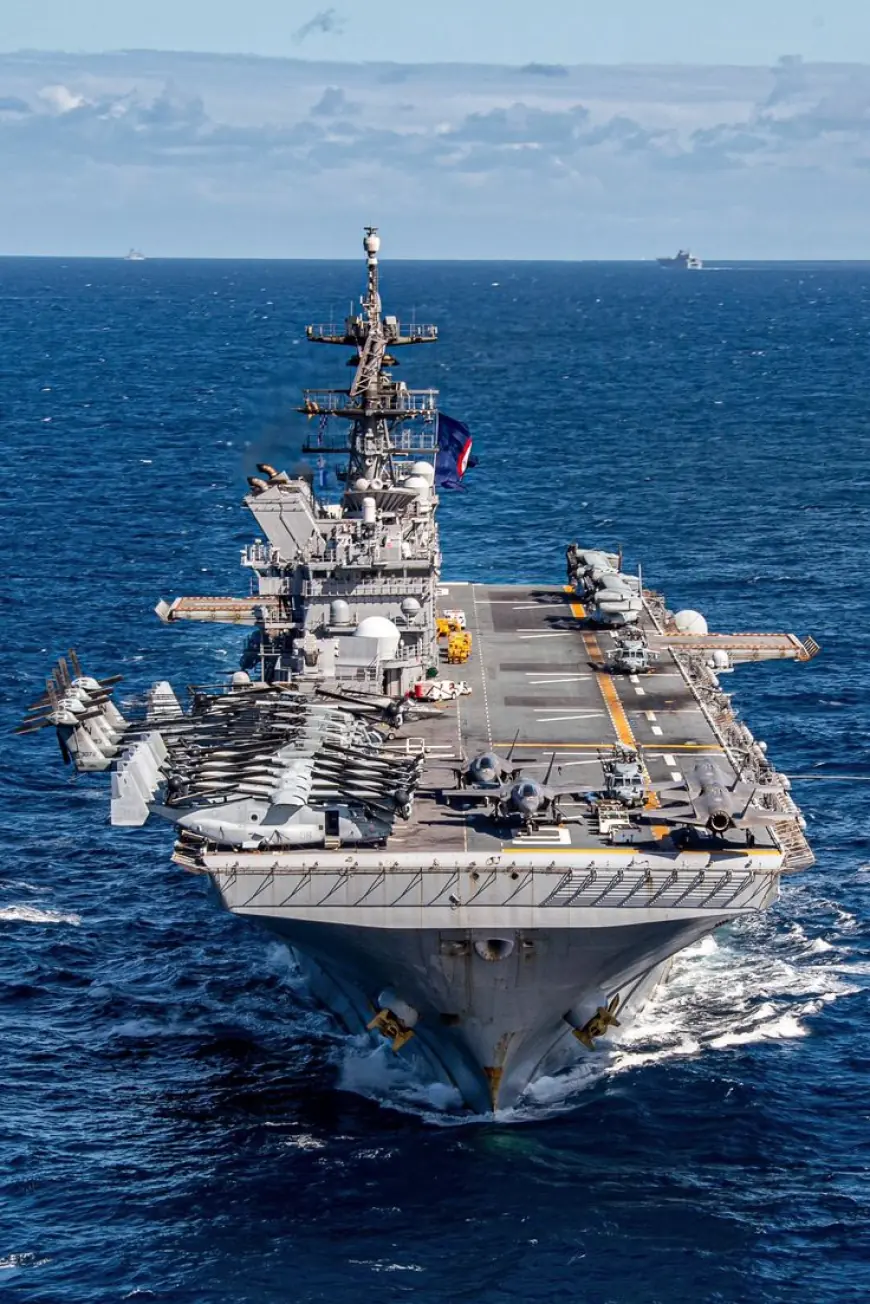10 Essential Navy Current Affairs for 2025
Explore the top 10 navy current affairs for 2025 that are shaping global maritime strategies. From technological breakthroughs to critical defense collaborations, discover how navies are navigating the challenges of the modern sea.

In 2025, the global naval landscape is undergoing a transformational shift marked by innovation, strategic alliances, and expanding geopolitical roles. As nations reevaluate maritime security and assert naval dominance, it's vital to spotlight the key developments that are steering the course of naval affairs. Here are the 10 Essential Navy Current Affairs for 2025, curated for TheVeza, offering insight into the evolving dynamics of naval power.
1. Indo-Pacific Naval Expansion
The Indo-Pacific region continues to be the center of gravity for naval activities. Countries like India, Japan, Australia, and the United States have increased their naval presence to ensure freedom of navigation and maritime security. The Quad Naval Exercises (QUADNAVEX 2025) featured record participation this year, demonstrating unified commitment toward regional stability.
2. Launch of the U.S. Navy’s Next-Gen Destroyer
The U.S. Navy unveiled its DDG(X) class destroyer, boasting advanced stealth capabilities, directed-energy weapons, and AI-powered threat detection systems. This marks a new era in surface combatant capabilities, enhancing deterrence and sea control.
3. India's Indigenous Aircraft Carrier Fully Operational
India's INS Vikrant, its first indigenously-built aircraft carrier, is now fully operational and integrated into the Eastern Naval Command. This milestone boosts India’s defense production autonomy and projects power across the Indian Ocean Region (IOR).
4. Arctic Naval Operations Intensify
Melting ice in the Arctic has opened new sea lanes, prompting increased naval deployments by Russia, the U.S., and NATO allies. The Arctic Shield 2025 Exercise focused on cold-weather operations, submarine warfare, and rescue missions, underlining the Arctic’s growing strategic importance.
5. Rise of Unmanned Maritime Systems
Nations are integrating Unmanned Surface Vehicles (USVs) and Autonomous Underwater Vehicles (AUVs) for mine countermeasures, surveillance, and reconnaissance missions. The U.K. Royal Navy’s Project Proteus is leading innovation in autonomous naval warfare.
6. South China Sea Tensions Reignite
The South China Sea remains a geopolitical flashpoint. In 2025, multiple standoffs occurred near the Spratly Islands, with increased patrols by ASEAN navies and U.S. Freedom of Navigation Operations (FONOPs) challenging Chinese territorial claims. The situation demands urgent diplomatic and strategic engagement.
7. Green Navy Initiatives
Environmental sustainability is now a naval priority. The Green Fleet 2025 initiative by NATO aims to transition vessels to hybrid and alternative fuel systems. Germany launched its first hydrogen-powered patrol vessel, setting a precedent for eco-friendly maritime operations.
8. Cybersecurity and Naval Defense
Naval operations have become increasingly digitized, making fleets more vulnerable to cyber threats. In response, the Global Maritime Cyber Defense Pact, signed this year by over 30 nations, promotes joint cyber drills, information sharing, and AI-based threat mitigation systems across fleets.
9. Submarine Modernization Programs
Strategic underwater deterrence is expanding. France, India, Australia, and China have all announced major upgrades to their nuclear and diesel-electric submarine fleets. India’s third Arihant-class SSBN was launched in 2025, boosting second-strike capabilities.
10. Women in Command Roles at Sea
2025 marks a progressive leap in gender inclusivity within navies. Several women have taken command of frontline warships in India, the U.S., and Canada. Captain Leena Sharma of the Indian Navy became the first female to command an operational fleet tanker during a joint exercise.
Conclusion:
The navy current affairs of 2025 are not merely updates—they are indicators of a world reshaping its maritime doctrines amidst rising challenges and opportunities. From cutting-edge technologies to international collaborations and gender inclusivity, navies are redefining their roles in shaping peace, deterrence, and regional dominance.
As TheVeza continues to spotlight strategic evolutions, understanding these naval currents ensures we remain attuned to global security architectures. The seas are no longer just routes of commerce—they are battlegrounds of influence and symbols of national pride.
What's Your Reaction?
 Like
0
Like
0
 Dislike
0
Dislike
0
 Love
0
Love
0
 Funny
0
Funny
0
 Angry
0
Angry
0
 Sad
0
Sad
0
 Wow
0
Wow
0


















































